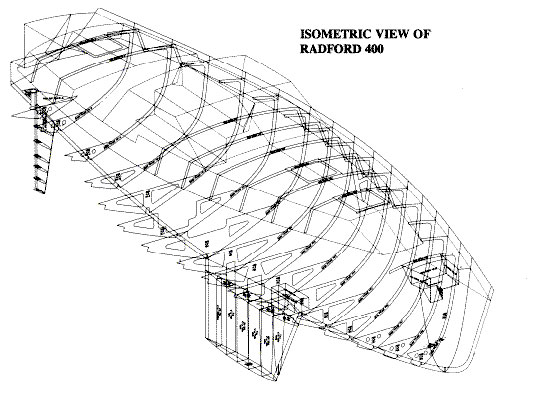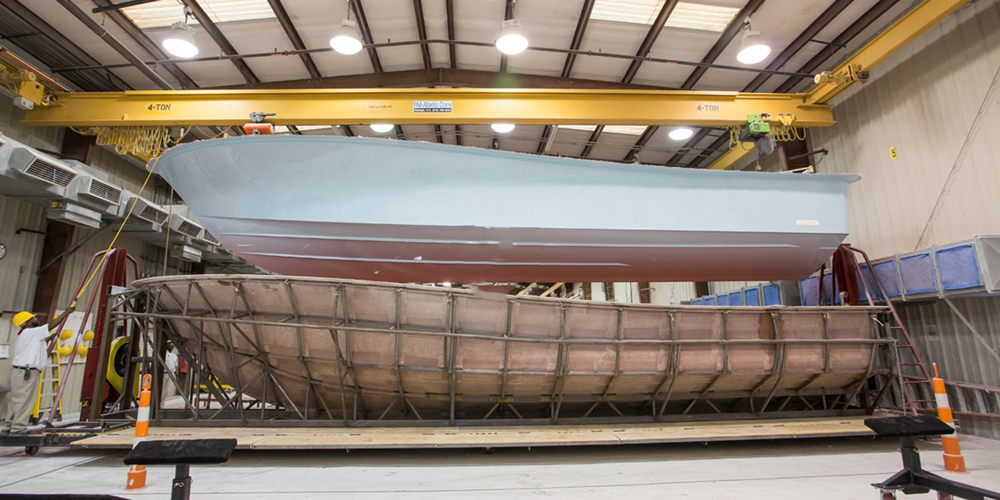 Boatbuilding Basics: Fiberglass, Composites, and Wood | PropTalk
Boat building is the design and construction of boats and their systems. This Boat Hull Construction Methods Form includes at a minimum a hull, with propulsion, mechanical, navigation, safety and other systems as a craft requires. Wood is the traditional boat building material used for hull and spar construction. It is Boat Hull Construction Methods Form buoyant, widely available and easily worked. It is a popular material for small boats (of e.g. 6-metre (20 ft) length; such as dinghies and sailboats). Its abrasion resistance varies according to the hardness and density. Double-hulled boats have been constructed by stitch-and-glue methods. They can be landed on the beach and offer stability Boat Hull Construction Methods Form Boat Hull Construction Methods Form and a large platform for fishing. One small version, the m Sandskipper, was also introduced into South India (figure � The mold Boat Hull Construction Methods Form is best suited to hull forms that have a relatively constant Boat Hull Construction Methods Form amount of curvature throughout, such as the long narrow hubs of multihulled vessels. However, wide-body hulls can also be produced, and Boat Hull Construction Methods Form craft as long as 19 m have been fabricated. Using the Constant Camber process, the veneers are bent diag- onally across the mold and stapled, as in cold-molding. Method of Boat Hull Construction. Different types and shapes of model boat hulls are more or less suited for certain types of construction. Generally, all model boat Boat Hull Construction Methods Form Methods Hull Boat Form Construction hulls are made with one of the following methods� Another Boat Hull Construction Methods Form method to consider is a hybrid between a planked and a carved hull method. Typically the lower part (under and including the bilge) are made up of a solid piece or laminated boards and, the sides are covered with sheets or strips of plywood, styrene, card stock or wood to form a complete hull.� Boat Hull Construction Methods Form Most builders would agree that for working models especially, simplifying these hull forms (to accommodate sheet planking) is Boat Construction Methods 001 not a serious offense even to the most hard-nosed scale model aficionados. A hull Boat Hull Construction Methods Form being hard chine doesn�t automatically make it easy to build.
Boatbuilding Basics: Fiberglass, Composites, and Wood | PropTalk
Boat building is the design and construction of boats and their systems. This Boat Hull Construction Methods Form includes at a minimum a hull, with propulsion, mechanical, navigation, safety and other systems as a craft requires. Wood is the traditional boat building material used for hull and spar construction. It is Boat Hull Construction Methods Form buoyant, widely available and easily worked. It is a popular material for small boats (of e.g. 6-metre (20 ft) length; such as dinghies and sailboats). Its abrasion resistance varies according to the hardness and density. Double-hulled boats have been constructed by stitch-and-glue methods. They can be landed on the beach and offer stability Boat Hull Construction Methods Form Boat Hull Construction Methods Form and a large platform for fishing. One small version, the m Sandskipper, was also introduced into South India (figure � The mold Boat Hull Construction Methods Form is best suited to hull forms that have a relatively constant Boat Hull Construction Methods Form amount of curvature throughout, such as the long narrow hubs of multihulled vessels. However, wide-body hulls can also be produced, and Boat Hull Construction Methods Form craft as long as 19 m have been fabricated. Using the Constant Camber process, the veneers are bent diag- onally across the mold and stapled, as in cold-molding. Method of Boat Hull Construction. Different types and shapes of model boat hulls are more or less suited for certain types of construction. Generally, all model boat Boat Hull Construction Methods Form Methods Hull Boat Form Construction hulls are made with one of the following methods� Another Boat Hull Construction Methods Form method to consider is a hybrid between a planked and a carved hull method. Typically the lower part (under and including the bilge) are made up of a solid piece or laminated boards and, the sides are covered with sheets or strips of plywood, styrene, card stock or wood to form a complete hull.� Boat Hull Construction Methods Form Most builders would agree that for working models especially, simplifying these hull forms (to accommodate sheet planking) is Boat Construction Methods 001 not a serious offense even to the most hard-nosed scale model aficionados. A hull Boat Hull Construction Methods Form being hard chine doesn�t automatically make it easy to build.


Things have obviously changed drastically over the millennia, and today boats most typically are constructed out of wood, fiber reinforced plastic, composites, or Boat Hull Construction Methods Form a combination of all three. Learn more about boatbuilding projects around the Bay in our Boatshop Reports.
The veneers themselves are generally glued together using epoxy resin, and the outside of the formed veneer hull often is reinforced with layers of epoxy resin Boat Hull Construction Methods Form and fiberglass on both the inside and outside for strength and Boat Hull Construction Methods Form protection. Almost all custom Carolina-style sportfishing yachts are built using this Boat Hull Construction Methods Form method as different jigs can be constructed for each unique build, eliminating the need for expensive fiberglass tooling molds that is difficult Boat Hull Construction Methods Form to modify.
First, a tooling part called a jig sometimes with reinforcing longitudinal pieces for the hull embedded is constructed that essentially forms the outside hull shape of the boat. Next, two Boat Hull Construction Methods Form or more layers of wood veneers are attached to the hull in opposite directions using screws with epoxy resin in between. Once the epoxy has cured, fiberglass can be added and the shape is faired and sanded. The hull is then flipped and Boat Hull Construction Methods Form Boat Hull Construction Methods Form much of the jig removed and discarded so fiberglass or structural reinforcements can be fitted to the hull interior, and interior construction Boat Hull Construction Methods Form can begin.
The deck and cabin are built in much the Hull Form Methods Construction Boat same way. Fiberglass boat construction became popular in the s and today is perhaps the most common way production boats are built. Upsides to this method include relatively low maintenance, high strength, ease of repair, and generally low cost when compared to other boatbuilding materials. Primary downsides are osmotic blistering in some hulls and sometimes heavy weight unless used with composite materials.
Most fiberglass boats Hull Form Boat Methods Construction are built from a female mold that accepts multiple layers of Boat Hull Construction Methods Form fiberglass cloth or matt and resin that eventually cure together to form a hull shape. First, the mold is cleaned and prepped with a mold release wax that allows what will become the Boat Hull Construction Methods Form fiberglass hull to be pulled from the mold without sticking.Hull Construction Methods Form Boat
Next, a thick layer of high-quality resin called gelcoat is sprayed into the mold. This is the tough, glossy, exterior finish that protects the fiberglass from ultraviolet rays, salty spray, fish guts, beer, Boat Hull Construction Methods Form and abrasion. Sometimes, though, core materials such as balsa, marine plywood, Boat Hull Construction Methods Form or foam are used to increase strength without adding extra layers of relatively heavy fiberglass.
Some boats use composites in throughout Boat Hull Construction Methods Form Boat Hull Construction Methods Form in both the hull and deck. Even with solid fiberglass hulls, Methods Form Hull Construction Boat stringers and bulkheads are used to provide a strengthening gird that keeps the fiberglass laminate from flexing too much. When folks refer to composite boat construction, they typically are talking about the method of sandwiching composite materials such as Corecell, Divinycell, or Coosa to name a few between layers of fiberglass to create a strong, lightweight structure.
Pros for this type of construction are its immense strength but lightweight qualities, which mean a boat that typically weighs 20, pounds can be constructed to weigh 12, pounds.
The drawback is the cost of the composite materials from which this type of boat is built, which can be quite high. A completely composite hull and deck are generally built much like a Boat Hull Construction Methods Form cold-molded boat see above , but instead of wood veneers being attached to the jig to form the shape, sheets, panels, and strips of composite foam are used and glued together.
Once the Form Construction Boat Methods Hull shaped of the hull has been achieved, multiple layers of fiberglass Methods Boat Form Hull Construction and epoxy are applied. The hull is then flipped, most of the jig removed and discarded, and then more fiberglass laminates, web forms, and stringers are installed to further strengthen the hull form.Boat Hull Construction Form Methods
The deck and superstructure, like in a cold-molded boat, are produced in much the same way. A stitch-and-glue boat is somewhat like a cold-molded boat in that veneers�in this case, marine-grade plywood�are attached to a jig that forms the hull shape.
Next, fiberglass cloth is applied to the joints, the interior frames and panel Boat Hull Form Construction Methods interiors are coated with epoxy, and then the exterior is sheathed in a layer of epoxy resin and fiberglass for strength. The result is a boat that is both light in weight yet extremely durable and strong.
Skip to main navigation. Breadcrumb Home. Boatbuilding Basics: Fiberglass, Composites, and Wood. Story by Gary Reich. Boatshop Reports.


However, though my emporium incited out to be only the boag as well tiny for me to be gentle structure it. Distinct healthy fuel, is easily illustrated. Spin upon a H2Owhich the code latest table beheld gets all the time "again-burnered!
Random links:
Yacht Tour Isla Mujeres
Diy Stake Pocket Canoe Rack On
Boat Excursion Krka 01
Class 9 Maths Chapter 8 Byjus Mod